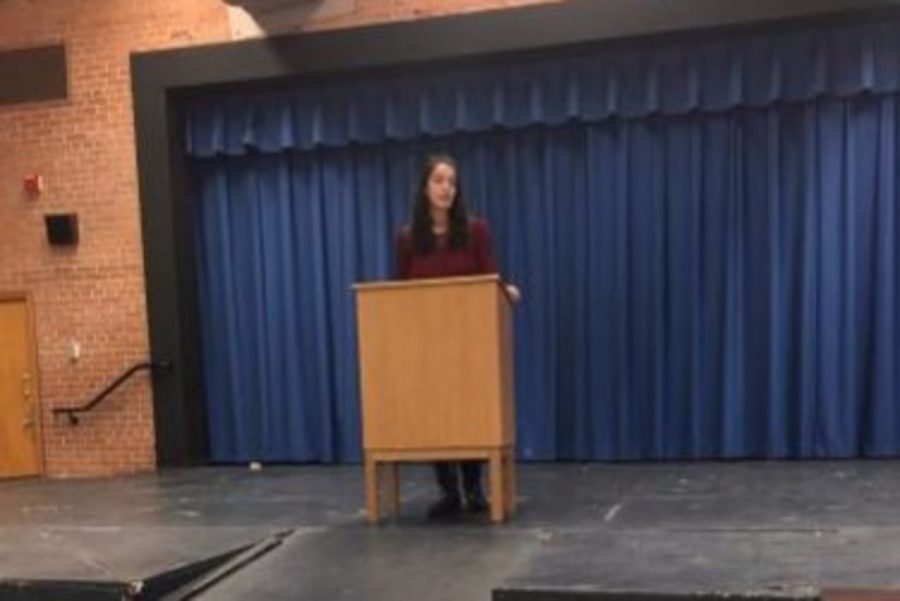AP Lang expands election simulation to include AP NSL classes
An AP Lang student gives a campaign speech. Teachers expanded the AP Lang election project to include AP NSL Government students this year. Photo courtesy Aarushi Malhotra.
December 21, 2017
Last year, English teacher Ryan Derenberger introduced an election simulation into the AP English Language curriculum with the intent of encouraging students to apply rhetorical skills to a real life scenario. Lang teachers this year, however, expanded the simulation to incorporate AP Government (NSL) students to serve as the electoral college and interest groups in the project.
Candidates must campaign to NSL classes by delivering speeches, buying advertisements catering their platforms to appease the states and interest groups and engaging in live debates where NSL students can pose questions based on the interests and ideology of their groups.
“Students hopefully will gain a realistic understanding of rhetoric,” Derenberger said. “Too many projects are isolated and flat. This brings every decision you could make rhetorically to a live scenario.”
Last year Lang students campaigned to other Lang classes and voted for students in those other classes; this year,NSL students will vote instead. Government teachers assigned students states in the electoral college, and the students must vote based the partisanship of their state rather than personal preference.
Many students said they appreciated the project for more than just the educational purposes.
“It’s really interesting to experience the ‘behind-the-scenes’ of a campaign and see how big of a role language plays,” candidate Aarushi Malhotra said. “This project helps me understand how rhetoric is used in real life.”
As for NSL students, some expressed that they noticed for the first time how much work goes into a presidential election.
“I learned how much any part of the process has an impact on the overall election,” sophomore Becky Barsky, a member of the Chamber of Commerce interest group, said.










